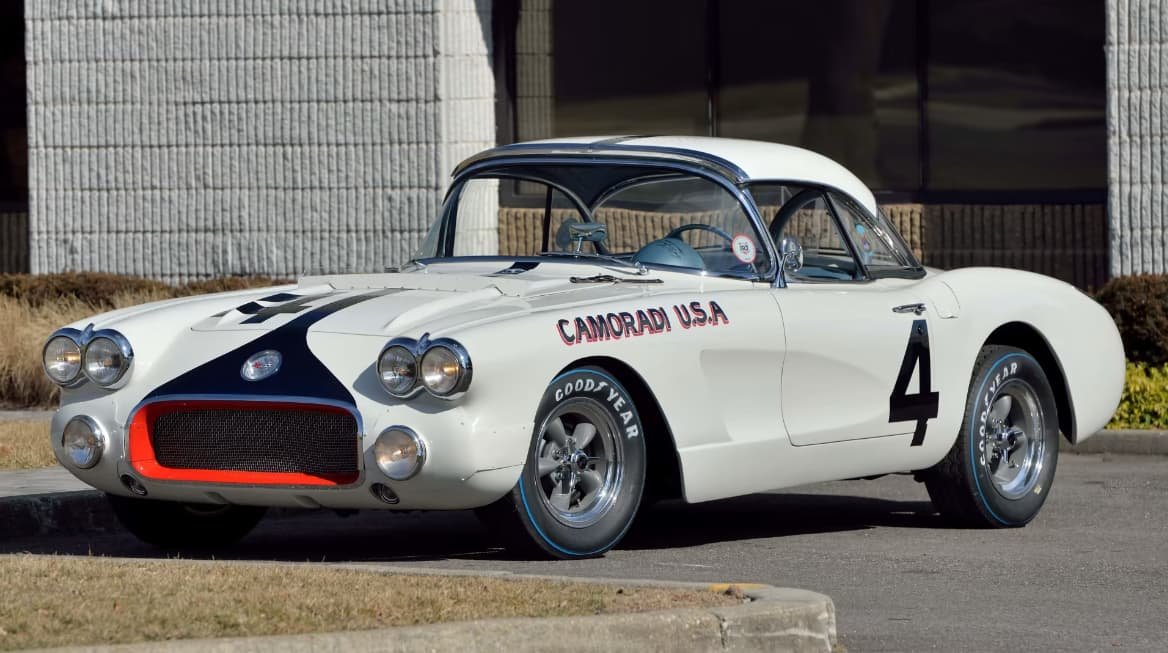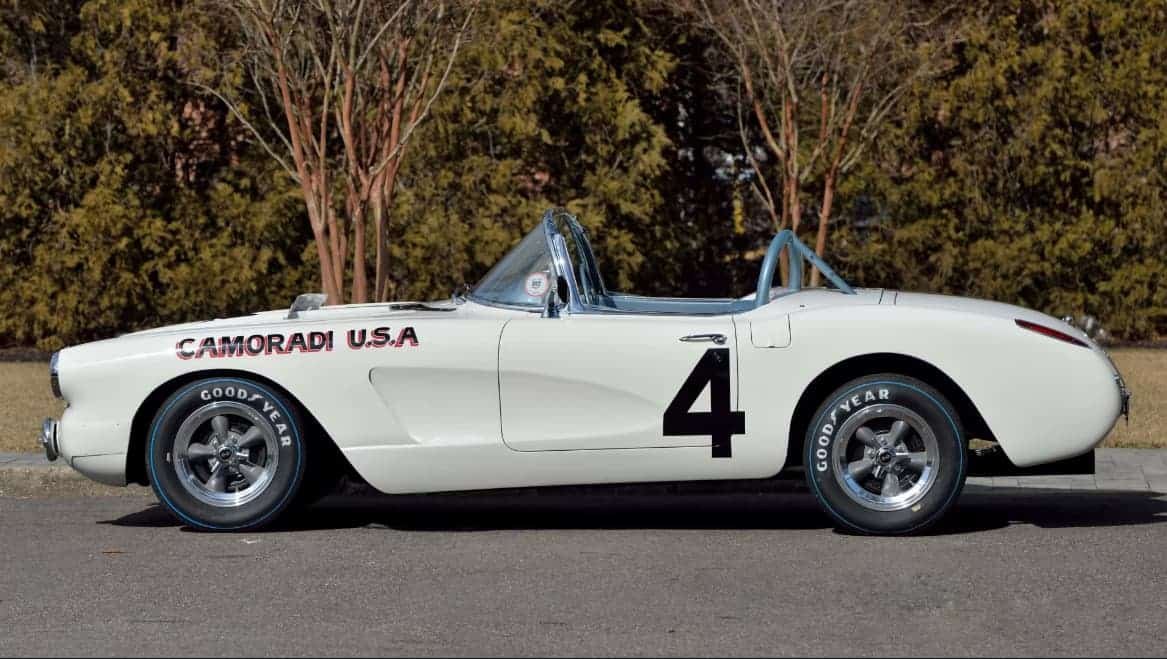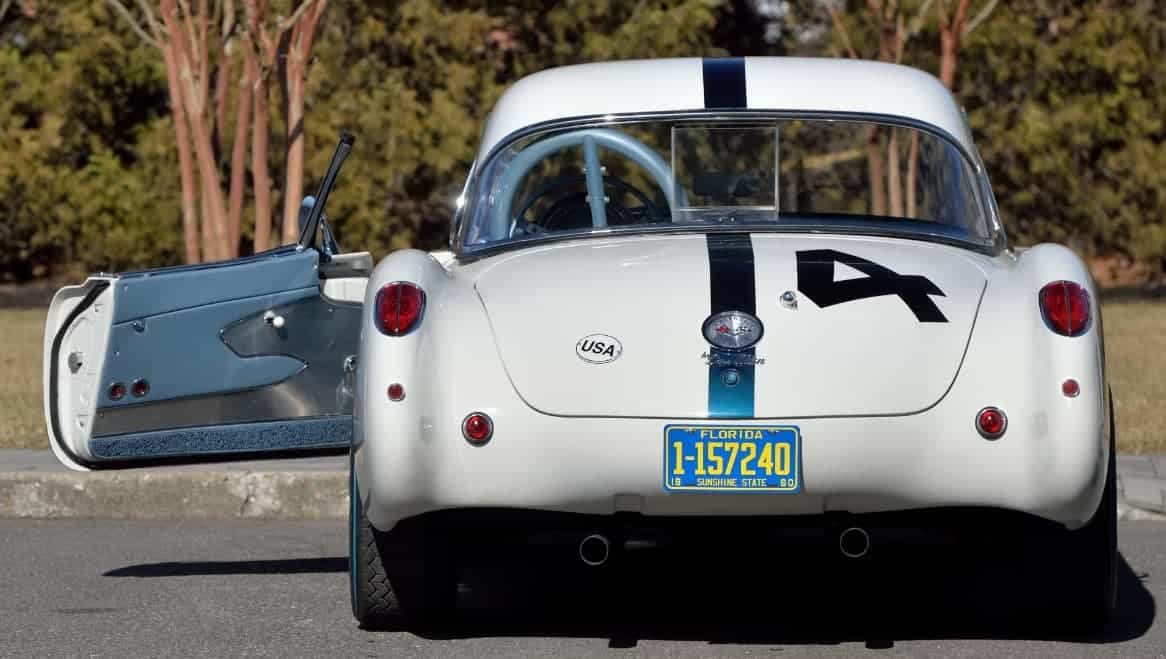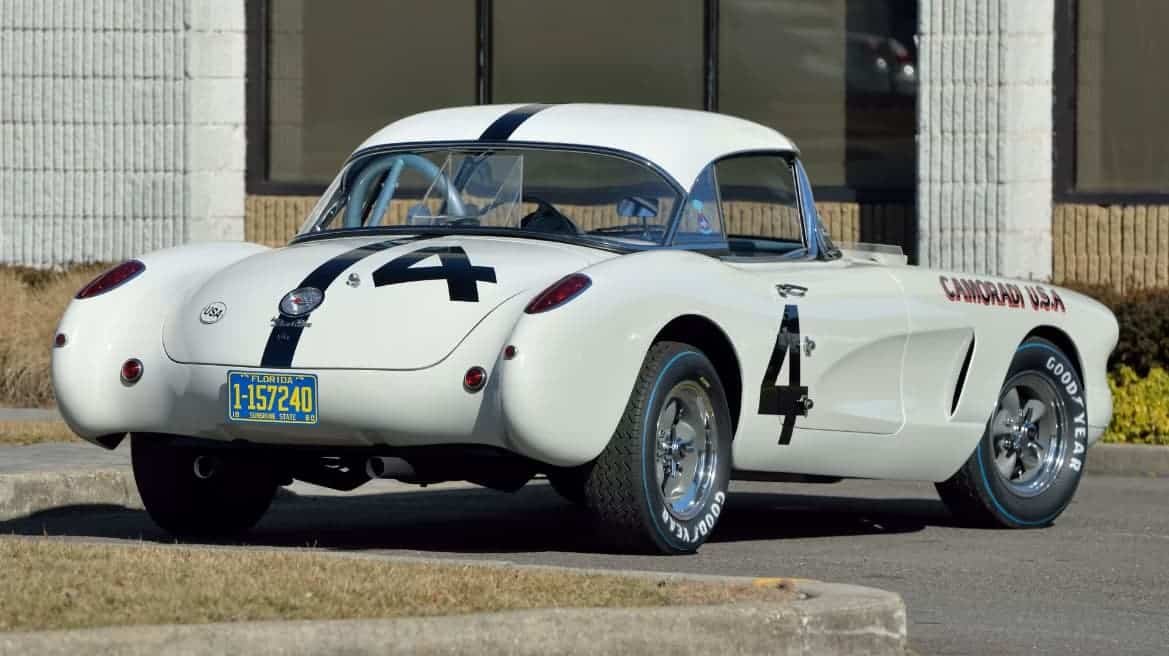The 1960 Chevrolet Corvette Le Mans Racer stands as a testament to the golden age of sports car racing. With its sleek design, powerful engine, and numerous victories, this iconic car has etched its name in the annals of motorsport history. In this article, we delve into the captivating story of Chassis No. 2272 and its remarkable journey on the tracks.
History of Camoradi USA Racing Team
At the heart of the Corvette Le Mans Racer’s success lies the Camoradi USA Racing Team. Founded by American airline pilot Lloyd “Lucky” Casner, Camoradi played a pivotal role in shaping the racing landscape of the 1960s. As a factory partner team for Goodyear tires and a Maserati factory entry, Camoradi became a force to be reckoned with.
Specifications of Chassis No. 2272
Chassis No. 2272, the star of our narrative, boasts an impressive set of specifications. Powered by a matching numbers 283/290 HP V-8 engine with Rochester mechanical fuel injection, this Corvette was built to Zora Arkus-Duntov’s racing specifications. Coupled with a 4-speed manual transmission and a positraction rear axle, Chassis No. 2272 offered unrivaled performance on the track.

Racing Success of Chassis No. 2272
Chassis No. 2272 quickly proved its mettle, securing victories in prestigious races across the globe. Jim Jeffords, a skilled driver, claimed triumph in both the 1960 Havana GT and 1960 Cuba GT races, establishing the Corvette’s dominance. Fred Gamble and Lloyd Casner further solidified the car’s reputation by winning the 1960 Swedish Grand Prix GT race. The Corvette also secured a commendable 2nd place in the GT Class at both the 24 Hours of Le Mans and the 12 Hours of Sebring in 1960, piloted by Fred Gamble and Lee Lilley.
Lloyd “Lucky” Casner and Camoradi
Lloyd Casner, affectionately known as “Lucky” for his remarkable achievements, was the mastermind behind Camoradi. As the owner of the Casner Motor Racing Division, he nurtured the team’s success, attracting renowned drivers such as Dan Gurney, Stirling Moss, and Carroll Shelby. Casner’s vision and dedication propelled Camoradi to greatness.

Restorations and Awards
Preserving the legacy of Chassis No. 2272 became a mission for passionate enthusiasts. The Corvette underwent a comprehensive restoration, resulting in its pristine condition. This dedication to authenticity and excellence garnered recognition from esteemed organizations. NCRS American Heritage and Ladies Vote awards, a National Corvette Museum award, and a Bloomington Gold display all testify to the car’s exceptional restoration.
Notable Features and Components
Chassis No. 2272 is a testament to the attention to detail and engineering prowess of the era. Its striking white exterior with blue stripes exudes timeless elegance, while the blue interior offers a perfect blend of comfort and sportiness. Original gauges, Marchal lights, and a 37-gallon fuel tank further enhance the car’s allure. Not to mention the inclusion of Koni special race tubular shock absorbers, RPO 687 heavy-duty ventilated hydraulic drum brakes, and a factory prepared special racing powerplant.

Camoradi’s Involvement with Maserati
While the Corvette Le Mans Racer remains Chassis No. 2272’s most renowned achievement, it is worth noting Camoradi’s parallel involvement with Maserati. As a factory partner team, Camoradi campaigned the Tipo 61 Birdcage in the 1960 Manufacturers Championship, fielding legendary drivers like Masten Gregory, Chuck Daigh, and Jim Jeffords. This collaboration added an extra layer of prestige to Camoradi’s already illustrious reputation.
The Crash and Rediscovery
The journey of Chassis No. 2272 took an unexpected turn when it suffered a crash on the roads of Sweden in 1960. The car, however, refused to fade into obscurity. Despite passing through multiple owners and being disassembled for 14 years, the Corvette resurfaced in 1995, thanks to the efforts of Loren Lundberg. This serendipitous rediscovery sparked new interest in the car’s captivating history.

Engine and Transmission Mystery
The crash in Sweden led to the removal of the original engine and transmission from Chassis No. 2272. After years of speculation, research finally shed light on their fate. Astonishingly, the engine found its way to New Zealand, where it was repurposed for an offshore racing boat. Tragically, the boat sank off the coast of Australia, taking the original powerplant with it, leaving enthusiasts with a bittersweet mystery to ponder.
Unique Accomplishments of Chassis No. 2272
Chassis No. 2272 stands out as the only straight axle Corvette to have successfully completed both the grueling races of Le Mans and Sebring. This feat solidifies its place as an enduring symbol of endurance and reliability. Additionally, the car’s inclusion of a copy of the 1960 Le Mans entry and inspection form, historic photos, artwork, and binders of documentation further enhance its historical significance.

Supporting Documentation and Media
Enthusiasts and historians alike have embraced the legacy of Chassis No. 2272, leading to its inclusion in esteemed publications. “The Corvette Courier” and “Vette Vues” have both featured this iconic racer, allowing readers to delve deeper into its remarkable story. Furthermore, the inclusion of historic photos, artwork, and binders of documentation ensures that this piece of racing history can be appreciated for generations to come.
Conclusion
The 1960 Chevrolet Corvette Le Mans Racer, represented by Chassis No. 2272, embodies the pinnacle of automotive engineering and racing excellence. From its victories on the track to its dramatic crash and subsequent rediscovery, this Corvette has woven itself into the fabric of motorsport folklore. As enthusiasts continue to celebrate and preserve its legacy, the legend of Chassis No. 2272 lives on, reminding us of an era when speed, passion, and innovation converged on the world’s most iconic racecourses.




